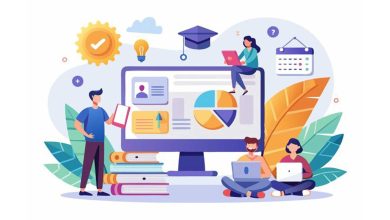
Typically, software companies skip over onboarding, tossing their partners a few introductory materials, user guides, and resources for them to look over. The new partner will then nod their heads and pretend they’ve studied them vigorously, but in reality, they’ve just taken a glance.
Businesses are now realizing that the traditional approach to training clients on their products is changing due to shorter attention spans and better understanding of each other’s businesses from the outset. Using AI in the process of training and partner enablement allows for the possibility of continuous education and learning paths and progress tracking over an extended period through a shared portal.
In a recent study looking into business partner onboarding processes, 60% of respondents said that they preferred onboarding processes that were designed with them in mind, which shows how important customization is. Additionally, more than three-quarters of the respondents said that they wanted to have a virtual companion that lets them choose their learning path and style, which highlights the demand there is for onboarding solutions that aid in the education process.
However, for a variety of reasons, which we will explore in this piece, it is not as straightforward as it sounds. Let’s examine the challenges of the onboarding process and consider how AI can make it much easier.
The challenges of partner onboarding
Many problems come down to data collection and management when it comes down to partner onboarding. In fact, according to a recent study from Deloitte, around 33% of companies believe that data integration is their main challenge with partner onboarding. At the same time, self-service autonomous solutions can resolve this by providing user-friendly interfaces and intuitive mapping tools. According to a Gartner forecast, most larger organizations will follow this self-service integration model by 2025 to improve their partner onboarding experience.
This data issue is closely linked to legacy IT infrastructure and old ecosystems. Outdated technology often struggles to cope with a partner’s needs, so successful integration and transfer can be really difficult. Additionally, there can be a lot of legal and policy hurdles to overcome, especially when it comes to systems dependent on data from upstream systems. AI can facilitate compliance with these legal and policy requirements by automating the verification and auditing processes, which, in turn, reduces the heavy burden of manual workload.
Another issue that can be very problematic is a simple one, but in the current economic climate, costs are more important than ever. Goodgist estimates that some software companies spend $5K-$50K per hour on training and onboarding content. Additionally, potentially up to $1000 per support ticket resolution. This is why having an Autonomous Knowledge Management System (AKMS) with a unified product access experience is crucial. It means you don’t have to connect so many strands and unforeseen costs.
Lastly, in terms of data entry itself when it is done manually, it can be time-consuming and slow down the partner onboarding process. It might take weeks to actually get your partner through the door. Self-service integration solutions can streamline this process with the auomation of data flow.
What else can an Autonomous Knowledge System offer you?
An advanced platform for partnership management primarily helps with process automation. For example, a new partner employee could be trying to set up an account to integrate with their system, which is tedious and time-consuming, but an automated workflow can make this much more straightforward. Depending on the use case, content generation for sales proposals, market research, and even responding to RFPs can all be done through an AKMS.
Also, when you have a system like this that is shared between partners, it means you can have a comprehensive support system where personalized resources, which might include case studies, marketing materials, and any other best practices, can all be easily exchanged. That way both sides are in agreement and ready to bounce off the other to improve. An underrated aspect here is also the idea that you don’t need to dump a load of resources on the partner, but rather you can just easily share them at the right time to stop information overload.
Partners can also sometimes have to wait a while for their software support request to get processed if they are a smaller company reaching out to their bigger peer. With Single-Sign-On (SSO) capabilities, partners can get around this issue. An Agentic AI embedded into their portal through JavaScript can directly provide support from the website or support portal.
Final Thoughts
Leveraging an AKMS powered by AI has the potential to revolutionize the partner onboarding process. By automating data management, customizing training content, and providing predictive analytics, businesses can go much further toward creating a better onboarding experience. However, it’s super important to remember that technology can only be as effective as the strategy behind it. Businesses cannot forget to refine their onboarding processes, ensuring they are responsive to partners’ evolving needs and market conditions.
If you are going to harness an AKMS, whichever way you decide to go about your approach to training content and learning management systems, you need to think about how your content can aid the onboarding and sales process, depending on the partner’s needs. This comes down to communication. You can manage expectations, share updates, and maintain good business relations with your partnership management platform.



